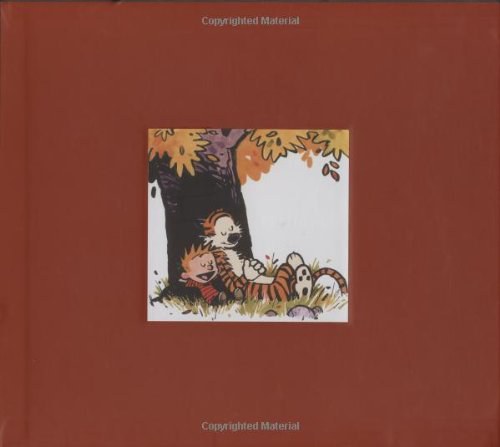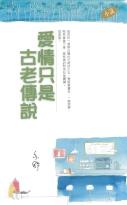
Chinese Esoteric Buddhism
书刊介绍
内容简介
Chinese Esoteric Buddhism is generally held to have been established as a distinct and institutionalized Buddhist school in eighth-century China by “the Three Great Masters of Kaiyuan”: Śubhākarasiṃha, Vajrabodhi, and Amoghavajra. Geoffrey C. Goble provides an innovative account of the tradition’s emergence that sheds new light on the structures and traditions that shaped its institutionalization.
Goble focuses on Amoghavajra (704–774), contending that he was the central figure in Esoteric Buddhism’s rapid rise in Tang dynasty China, and the other two “patriarchs” are known primarily through Amoghavajra’s teachings and writings. He presents the scriptural, mythological, and practical aspects of Chinese Esoteric Buddhism in the eighth century and places them in the historical contexts within which Amoghavajra operated. By telling the story of Amoghavajra’s rise to prominence and of Esoteric Buddhism’s corresponding institutionalization in China, Goble makes the case that the evolution of this tradition was predicated on Indic scriptures and practical norms rather than being the product of conscious adaptation to a Chinese cultural environment. He demonstrates that Esoteric Buddhism was employed by Chinese rulers to defeat military and political rivals. Based on close readings of a broad range of textual sources previously untapped by English-language scholarship, this book overturns many assumptions about the origins of Chinese Esoteric Buddhism.
=======
By focusing on the career and legacy of Amoghavajra, one of the most significant figures in the history of East Asian Buddhism, Geoffrey C. Goble's work provides a detailed image of Esoteric Buddhism in elite Chinese society and fills a long-standing lacuna in the field of Chinese Buddhist studies. Through careful translation and close reading of a wide range of textual sources, Chinese Esoteric Buddhism advances our understanding of Esoteric Buddhism as an elite religious tradition in Tang China and also illuminates the dynamic relationship between the Chinese imperial state and religious practitioners and institutions. Goble's work provides a granular study of the historical, cultural, and personal factors that contributed to Amoghavajra's rise to influence and the formation of Esoteric Buddhism in Tang China. Chinese Esoteric Buddhism is necessary reading for all who are interested in the Tang Dynasty, East Asian Esoteric Buddhism, and early tantric Buddhism.
Bernard Faure, Columbia University
Carefully attending to historical context, Goble clarifies Amoghavajra's role as propagator of Buddhist tantras in China. Demonstrating how his teachings found favor by conforming to Tang dynasty imperial religion and by promoting lethal rites, Goble then traces Amoghavajra's political and religious legacy and his function as an index for the collection and circulation of texts and discourses in subsequent Chinese Buddhist history.
Charles D. Orzech, Colby College
Goble's treatment demonstrates that Amoghavajra is one of the preeminent figures in the history of Buddhism, not just in East Asia but in the entire history of Buddhism. As a Buddhist thinker and practitioner Amoghavajra stands equal to any other landmark figure. Goble's definitive study brings new clarity to the debate over the nature, practices, and institutional existence of an Esoteric Buddhism in Tang China. In fact that debate can now be considered closed.
Richard K. Payne, Institute of Buddhist Studies
Amoghavajra stands out as a towering beacon in the history of Esoteric Buddhism in China, and no study on this important Buddhist tradition would be complete without referring to him and his achievements. In this new study Geoffrey C. Goble takes a critical look at Amoghavajra and his legacy, and in this process undertakes an in-depth investigation into the primary sources, in particular those which elucidate the Buddhist master's intimate relationship with the Tang court and the country's political elite during the middle and second half of the eighth century. Goble's study is therefore as much about elite religion as it is about the interface between the Buddhist religion and politics in late medieval China. A must for anyone interested in Tang history and Esoteric Buddhism.
Henrik H. Sørensen, Ruhr University
作品目录
AcknowledgmentsList of Conventions and Abbreviations
Introduction
1. The Three Great Masters of Kaiyuan and the Teaching of the Five Divisions
2. Esoteric Buddhism in Context: Tang Imperial Religion
3. Esoteric Buddhism in Context: The An Lushan Rebellions and Tang War Religion
4. Amoghavajra and the Ruling Elite
5. The Institutional Establishment of Esoteric Buddhism
6. The Consolidation of Amoghavajra’s Legacy
Notes
Bibliography
Index
· · · · · ·
作者简介
Geoffrey C. Goble is assistant professor of religious studies at the University of Oklahoma.
相关推荐
-

沈从文别集
沈从文(1902—1988),著名作家、历史文物研究学者。湖南凤凰人,苗族。早年投身行伍,1924年开始文学创作,是白话文学革命的重要践行者和代表作家,他的小说...
-

袍哥
王笛,男,1956年6月出生于成都。现为澳门大学特聘教授、历史系主任。兼任上海师范大学都市文化研究中心特聘研究员、华东师范大学思勉人文高等研究院紫江讲座教授。1...
-

告别天堂
笛安,1983年出生,狮子座;社会学硕士,现居巴黎。代表作:《西决》《告别天堂》新作:《东霓》于《最小说》杂志连载中。
-

湖中公子
小狐濡尾漂在北京的湖北人,本职工作之余,尤爱以白纸对青天,以笔底人物悲喜,抒胸中丘壑起伏。古言、现言均有所涉猎,风格多样。《南方有乔木》入选2017年迎接十九大...
-

知行合一五千年:度阴山讲中国史·2
《知行合一五千年:度阴山讲中国史·2》内容简介:“度阴山讲中国史系列”是一套通俗中国史,上起神话时代,下至清朝灭亡,覆盖中华
-

写作法宝(30周年纪念版)
《写作法宝(30周年纪念版)》内容简介:《写作法宝》一书,以其合理的建议、清晰的表述、温和的风格而为读者称道。本书为所有想要
-

土木工程结构试验与检测
土木工程结构试验与检测 内容简介 本书是“新世纪土木工程系列教材”之一,按照《建筑结构试验》教学大纲的要求编写而成。内容包括:结构试验设计、加载设备与试验装置、...
-

福柯的界线
※清华大学教授、知名学者汪民安力作※探究无孔不入的权力,抵抗现代社会对人的规训,完整而清晰地勾勒福柯思想谱系【编辑推荐】福柯所研究的对象大多从未进入过学院的视野...
-

在约伯的天平上
《在约伯的天平上》(灵魂中漫游)是舍斯托夫的一部重要代表作。全书分为三个部分,第一部分是他对俄罗斯著名思想家、文学家陀思妥耶夫斯基与托尔斯泰两位大师的评述。舍斯...
-

东方游记
勒·柯布西耶(Le Corbusier): 本名夏尔- 爱德华. 雅内莱(Charles-Edouard Jeanneret),20 世纪伟大的建筑师,也是优秀...
-

杰克·吉尔伯特诗全集
精彩摘录因为永远不在了,她就会更清晰吗?因为她是淡淡蜂蜜的颜色,她的洁白就会更白吗?一缕孤烟,让天空更加明显。一个过世的
-

特殊罪案调查组
畅销悬疑作家九滴水全新推理系列,聚焦横跨多年悬而未破的旧案。证据虽一时失声,但不会永久沉默。每起悬案背后,都是赤裸的人性与欲望。【数字凶手】近日,刑侦局在梳理悬...
-

不平等的樣貌
星國年度TOP1暢銷熱門話題書揭開新加坡人的「家醜」,不敢公開的社會真相全球GDP人均所得亞洲第一、世界排行第八人民擁房率90%,貧困人口卻可能高達20%外人稱...
-

ゆうき《空想カレシ》
大好きな水谷先輩が記憶喪失になった。病院で目を覚ました先輩は、友達のことも恋人がいたかも忘れている。『それなら…嘘を吐い
-

Brian Hiller《Aliens Believe Too!》
Goodaliens,evilaliens,avirus,cops,acunningprofessorandadaringnewspaperreportersp...
-

钱锺书手稿集•外文笔记(第一辑)
《钱锺书手稿集•外文笔记》第一辑(全三册),名为“钱锺书在欧洲(1935-1938)”,收录钱先生在英国牛津埃克塞特学院以及之后到法国巴黎学习期间所记的10本读...
-

蓬莱轩医案-沈平舟先生方案-清代吴中珍本医案丛刊-第三辑
蓬莱轩医案-沈平舟先生方案-清代吴中珍本医案丛刊-第三辑 内容简介 《蓬莱轩医案》是徐召南的临证医案,旧抄本,每面九行,行二十字,楷书精抄,以前从未出版过。本书...
-

極惡偵探
望公太正義來得太遲,秩序離得太遠。法律是脆弱的,良善是虛幻的,能相信的僅有惡意。
-

银河系公民
作者简介罗伯特·海因莱因是美国最有影响力的科幻作家。他以高超的叙述技巧、精巧的科幻构思、极具时代感的激进思想以及对美国历
-

一個人做飯好好吃
高木直子平易近人的家常飯菜圖文書既非美食家也非貴婦如實呈現家常飯菜的圖文書你最喜歡吃什麼?餃子﹑烏龍麵﹑炸雞塊﹑白飯﹑醬菜﹑番茄義大利麵﹑涼拌魚肉﹑鹹鮭魚子﹑海...





